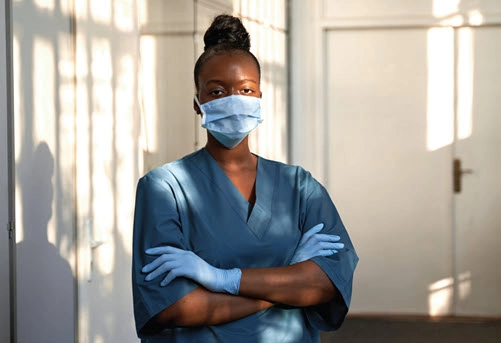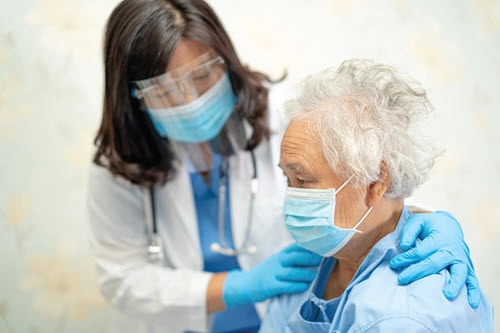The transmission of COVID-19 may be out of your hands.
The U.S. is still struggling to get a hold on the SARS-CoV-2 virus, which causes COVID-19 infections, and the long-term care industry has been both put under a microscope and left without a lifeline. As the virus continues to rampage through the country, now hitting Sunbelt states with particularly high populations of elderly folks. Long-term care industry stakeholders are wondering whether their best efforts at infection control can ever be enough or whether facilities are at the mercy of the virus’s spread occurring in their wider communities.
New research suggests that infection control measures are important, ongoing staff training is essential, and facilities are hard-pressed to avoid COVID-19 infection if there is active community transmission of the virus in their town or region. One thing everyone agrees upon and research backs up? Nursing homes and all long-term care facilities need support from state and federal leadership to secure personal protective equipment (PPE) in order to protect staff and residents alike.
Brace Yourself if COVID-19 Rates are Rising in Your Area
The data on COVID-19 is already difficult to parse due to local, state, and federal policies on reporting that have changed throughout the pandemic and continue to change still.
One major reason that it’s difficult to understand how the virus is affecting the long-term care industry is that the new federal data reporting requirement only requires Medicare-certified skilled nursing facilities and Medicaid nursing facilities to report, whereas state data show that assisted living facilities and other long-term care industry are also suffering from COVID-19 infections and deaths, say, Rachel Garfield, vice president of the Henry J. Kaiser Family Foundation and co-director of its program on Medicaid and the Uninsured, and Priya Chidambaram, a policy analyst in that program.

Based on the data available, facilities in hotspot areas continue to see a rise in cases, regardless of the COVID-19-related protocols they’ve put in place to prevent or mitigate the virus’s presence in a facility, Garfield and Chidambaram say.
For example, data, where it’s available, shows that COVID-19 cases in long-term care facilities in 23 hotspot states rose 18 percent over a 14-day period, compared to 4 percent over a similar 14-day period for 12 states that were not considered hotspots, they say. This suggests that infection in a facility is tied to general community transmission and spread. And even though the media is pointing to younger people making up a sizable fraction of new cases in states like Florida and Texas, the data show that these states reported a doubling of cases in long-term care facilities from June 24-July 9.
You Need Resources to Control Infection
Industry stakeholders know that many facilities are short on both staff and resources — crucial aspects to providing quality care while keeping all staff and residents as safe as possible, especially during a pandemic. If you feel like you could be managing COVID-19 risks and infection control better if you had more PPE and didn’t have to worry about staff shortages, you’re not alone.
As of June 28, nearly one in three nursing homes reported facing a shortage of staff or PPE. A facility’s location in a hotspot or non-hotspot state didn’t affect the facilities’ perceived shortages, according to the data, with approximately 30 percent of nursing homes in each respective group reporting insufficient staff or PPE, Chidambaram says in an analysis of rising cases of COVID-19 in long-term care facilities.
Industry leaders have been pushing state and federal leaders and agencies for more help for months, and resource shortages have been a consistent plea.
Tracey Moorhead, president and CEO of the American Association of Post-Acute Care Nursing (AAPACN) in Denver, said that “significantly greater quantities” of PPE would be a crucial demonstration of support for nursing facilities, especially in the short term, in a July 17 letter to the Coronavirus Commission for Safety and Quality in Nursing Homes.
She notes that the federal government has tried to get some additional PPE to facilities, but it wasn’t a perfect effort, and submitted the following comment as a response in support of the Commission’s objectives: “Ensure access to sufficient and appropriate supplies of personal protective equipment (PPE) for all nursing facilities care providers. Nursing facilities must be a priority to receive PPE (masks, gowns, gloves) and hand sanitizer. Many, but not all, nursing facilities received a 14-day supply of PPE from the Federal Emergency Management Administration (FEMA) earlier this year. Unfortunately, the quality of the supplies received was in no way sufficient for most facilities. Further, many facilities reported the PPE was not usable or was not intended for medical use.”

Mark Parkinson, president and CEO of American Health Care Association and National Center for Assisted Living (AHCA/NCAL), and Scott Tittle, executive director of NCAL, made a similar plea in a July 14 letter to the National Governors Association.
“Currently, nearly 20 percent of nursing homes report to CDC that they either do not have or have less than a one-week supply of PPE, and more than half of assisted living communities have less than a two-week supply of N-95 masks and gowns. N-95 masks are still not available and were not included in the FEMA shipments to nursing homes,” Parkinson and Tittle say.
Bottom line: If you’re feeling overwhelmed by guilt or hopelessness that you’re not able to do enough with what you have to protect residents, you’re not alone. Data analysis shows that the possibility of COVID-19 infecting a facility is more of a reflection on what’s going on outside the walls than anything else. Industry leaders are fighting for more resources; in the meantime, do your best to be accountable to the safety of your residents and colleagues while trying to avoid feeling personally responsible for how COVID-19 may be affecting your facility.
